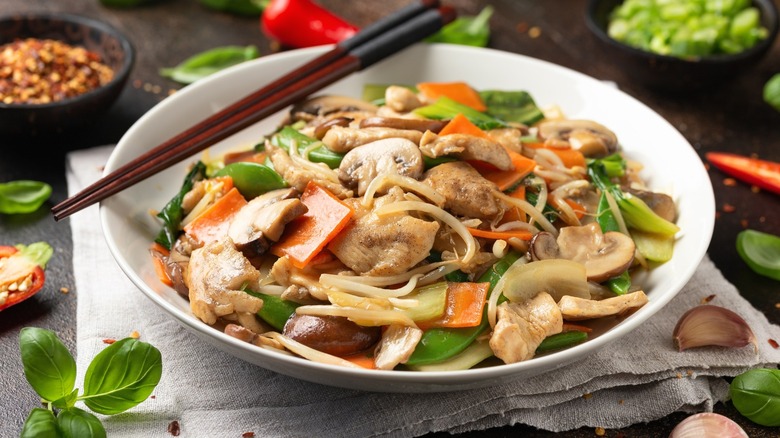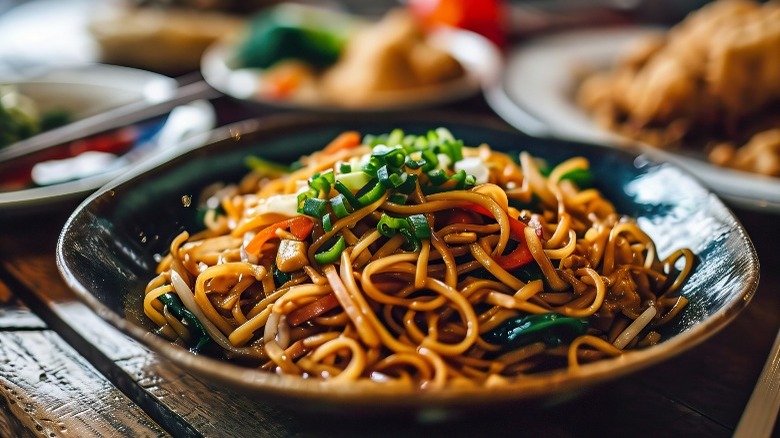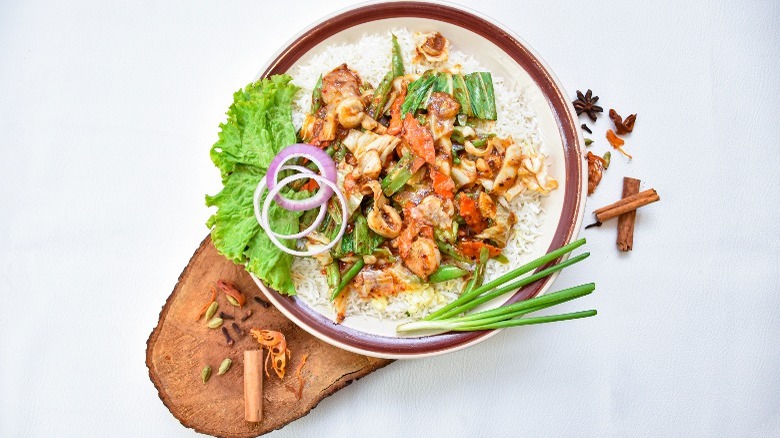What Makes Chop Suey Different From Chow Mein?
When ordering Chinese takeout in the United States, you'll likely find one or both of these dishes on the menu: chow mein or chop suey. At first glance, many people might mistake them for being the same dish. They share similarities in their appearance and U.S. history; however, they have different origins, textures, and tastes. Chow mein requires noodles as the main ingredient, while chop suey is more up to interpretation. Chow mein and chop suey are both dishes featuring a starch, vegetables, protein, and sauce. Each has also served a specific role in Chinese American cuisine dating back to the 19th century, when this food culture started to take off in the states.
Chinese American food reflects the history of Chinese immigrants and their contributions to the culinary world as well as the hardships they faced in making a name for themselves. Inaccurate and, quite frankly, racist myths about Chinese cuisine and people permeated the dominant culture in the 19th and 20th centuries, even though many Americans who tried the food responded well to the taste. Ultimately, good taste won out, though many dishes were altered to suit Americans' palates and ingredients. Though they might be unrecognizable in modern mainland China, both chow mein and chop suey exist today as delicious Chinese American foods with distinct features.
Chow mein requires one special ingredient
Chow mein is distinct from chop suey because it requires a specific ingredient: noodles. The name comes from a Mandarin phrase, "ch'ao mien," meaning "stir-fried noodles." Common add-ins include green onion, carrot, cabbage, bean sprouts, mushrooms, and light soy sauce. Meat and gravy toppings were later added to cater to the American palate. Note that there's a difference between chow mein and lo mein, which leaves the noodles softer in a thicker sauce.
Chow mein also varies depending on region, so Chinese restaurants may have different ways of preparing the dishes. Hong Kong-style chow mein features a bed of crispy-fried egg noodles with vegetables and sauce served on top to let the juices soak in and absorb into the fried noodles. Some versions also replace the egg noodles with rice-based vermicelli noodles. Regardless of how the dish is prepared, chow mein must have noodles as the key ingredient.
Chop suey is a resourceful technique
Unlike chow mein, chop suey is more fluid in its preparation and ingredients. The name comes from the phrase, "tsap seui," (Cantonese ) or "tsa sui" (Mandarin), roughly meaning "odds and ends." Chop suey started as an amalgamation using leftover ingredients from other dishes until it became a part of American restaurant culture. The consistent parts of this dish are that it will have fried rice (sometimes noodles), vegetables, sauce, and protein. But you can make it from anything you have on hand, making it a popular recipe on the list of ways to reduce food waste.
But chop suey's origins are as contentious as its recipes. Scholars debate who exactly invented this dish and argue whether it's a true part of Chinese history or an American facade. It seems the truth is somewhere in the middle — that chop suey is authentically Chinese American. Chop suey as a dish transcends labels and has become its own ever-changing piece of culinary history. People can make it their own way, and there are plenty of recipes to choose from.


